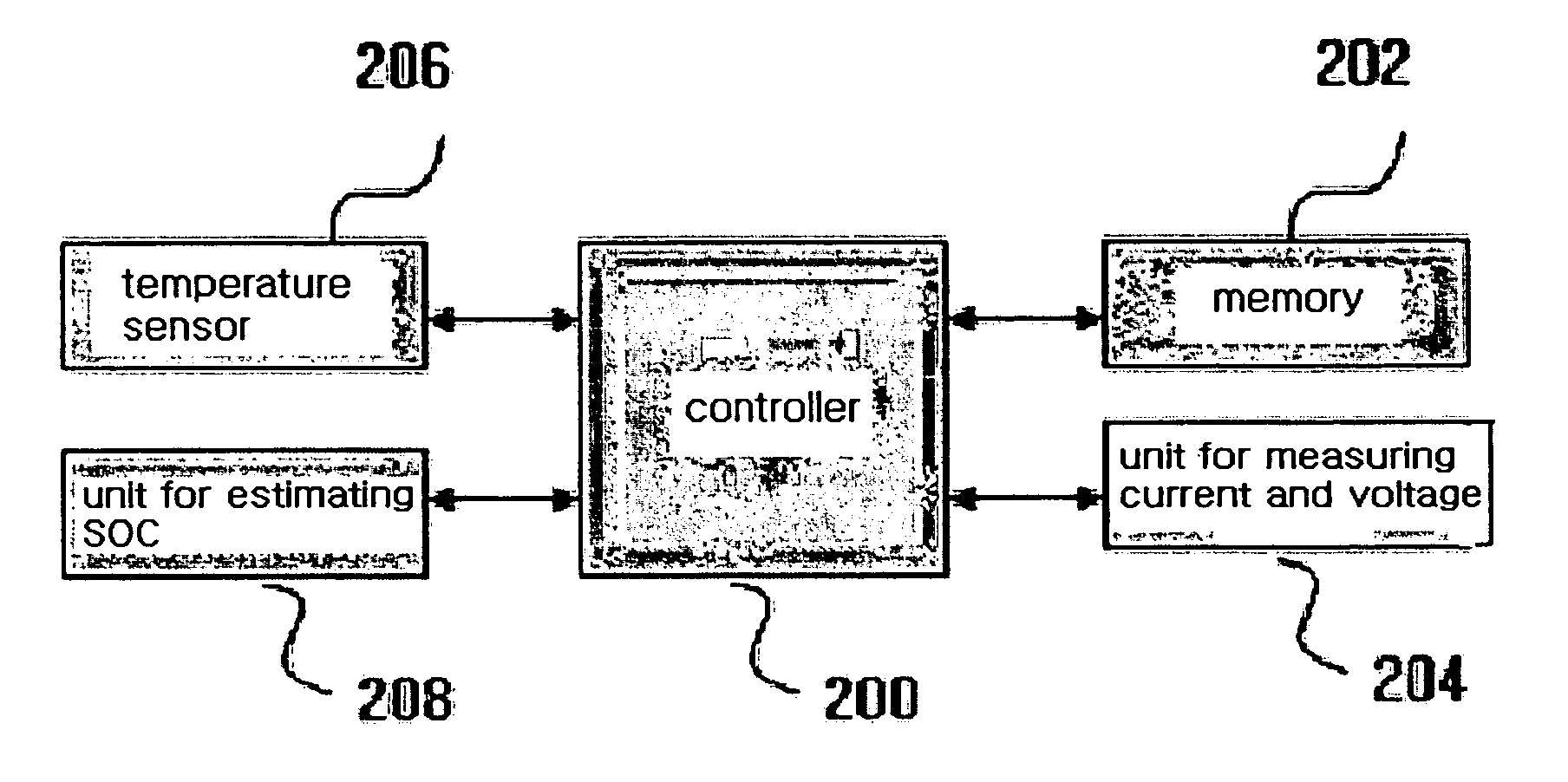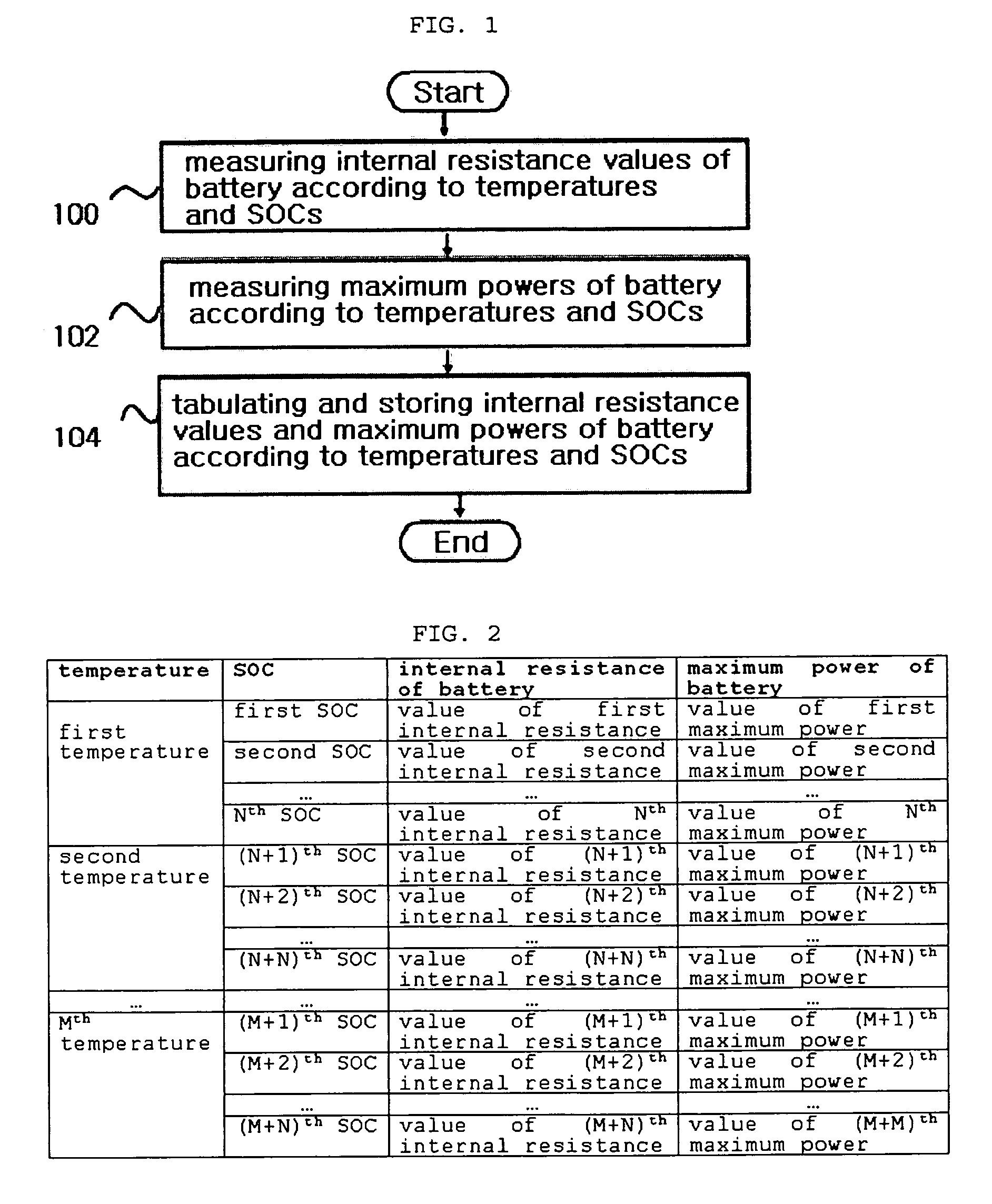Method and apparatus for estimating maximum power of battery by using internal resistance of the battery
a technology of internal resistance and battery, which is applied in the direction of battery/fuel cell control arrangement, instruments, transportation and packaging, etc., can solve the problems of not disclosing a method for estimating unable to measure the maximum power of the battery directly, and cannot be directly measured. to achieve the effect of easy and accurate estimation of the maximum power of the battery
- Summary
- Abstract
- Description
- Claims
- Application Information
AI Technical Summary
Benefits of technology
Problems solved by technology
Method used
Image
Examples
Embodiment Construction
[0016] Hereinafter, the preferred embodiment of the present invention will be described with reference to the accompanying drawings.
[0017] First, a method for configuring a table of the maximum power of a battery according to the present invention will be described with reference to FIG. 1.
[0018] An experimenter measures internal resistance values according to temperatures and states of charge (step 100). At this time, the environments, i.e. temperature and state of charge, under which the internal resistance value of the battery is measured, are within a range of an actually operational temperature and an actually operational state of charge of a certain battery. Specifically, with relation to the measurement of the internal resistance value, voltages and currents are preferably measured according to temperatures and states of charge, instead of directly measuring the internal resistance values, so that each of the internal resistance values is calculated by using the measured va...
PUM
| Property | Measurement | Unit |
|---|---|---|
| power | aaaaa | aaaaa |
| internal resistance | aaaaa | aaaaa |
| temperature | aaaaa | aaaaa |
Abstract
Description
Claims
Application Information
 Login to View More
Login to View More - R&D
- Intellectual Property
- Life Sciences
- Materials
- Tech Scout
- Unparalleled Data Quality
- Higher Quality Content
- 60% Fewer Hallucinations
Browse by: Latest US Patents, China's latest patents, Technical Efficacy Thesaurus, Application Domain, Technology Topic, Popular Technical Reports.
© 2025 PatSnap. All rights reserved.Legal|Privacy policy|Modern Slavery Act Transparency Statement|Sitemap|About US| Contact US: help@patsnap.com



